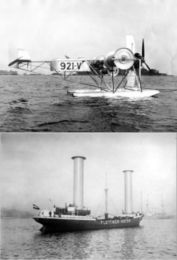
The Magnus Effect is named after Heinrich Gustav Magnus (1802-1870), the German physicist who discovered it. It is associated with a spinning object that drags air faster around one side, creating a differenciated pressure. The object’s trajectory is deviated in the direction of the lower-pressure side. It is a commonly observed effect in ball sports, as a spinning ball curves away from its principal flight path when thrown in a certain way. As it affects spinning missiles, the Magnus effect is used in engineering, for the design of rotor ships and Flettner aeroplanes for instance.



